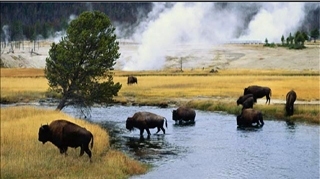|
Early Roads
Township Roads
1st governmental entity in county to be
responsible for roads
Appointed an overseer
Budgets included funds for purchasing scrapers, later maintainers, and
hiring someone to maintain the roads.
Men living in the township constructed the early roads
Later contracted out to the county
Now only a few miles in about 3 townships that are not
maintained by the county.
Poll Taxes
Form of taxation, a head tax of a
set amount per person, usually for a specific purpose
Jewish law ½ shekel for upkeep of temple in Jerusalem
Roman period purpose of census to update tax lists form
of taxation in provinces
(Josephs trip to Bethlehem)
European countries 1200s 1700s finance wars
United States 1800s to present local government tax pay
before voting
Used in south to prevent blacks and
poor whites from voting
Method of taxing those who did not own property
Paid along with property & personal property taxes
Buffalo County poll tax $3.00
Collected by the county or incorporated cities/towns/villages
Used for street and road repair and maintenance
Could be worked off
Rate change June 1907
Township rate reduced to $2.50
payable in cash when personal property taxes were paid
Incorporated areas remained at $3.00
and could still be worked off
Exemptions
1889 Nebr. Legislature exempted pensioners (veterans of
Civil War)
1890 Kearney exempted any man who had been a volunteer
fireman 5 years
Later changed
to include any volunteer fireman
Men 50 and older
Practice of working it off phased out by 1927
Types of Roads
earth, sand, clay, gravel, macadam
wood block pavements in St. Paul/Minneapolis, sawdust in Minnesota near
a sawmill
Early Cross Country Routes
Four routes in 1912
At least one went north of us
Sunset Trail said to be the best but not so good in the summer because of
the heat and barren plains
Shortest was the Platte Valley Transcontinental route.
Logical one being the shortest and
had the most people living along it.
Just one 200 mile stretch between
Rawlins and Granger, WY
Had only railway stations so there was no one to work the roads.
Suggested that Acts of legislature
would have to be passed for care of stretches like that.
Lincoln Highway
Established in summer 1913 [Lincoln Highway Assoc. national convention
will be held in Kearney to celebrate the centennial next summer]
Seeding Mile constructed that fall
Dec. article about the condition of roads along the Lincoln Highway route
Roads are dirt, gravel, sand, and macadam.
No stone roads. [Seedling Miles not mentioned]
Kearney in the Gibbon to Lexington district, a distance of 43.1 miles, all
dirt.
Kearney Commercial Club led in
promoting better roads.
(Predecessor to Kearney Area Chamber of Commerce)
Promoted good roads into Kearney to make easy access for customers
Held Good Roads Fairs
Ending Story
Hub March 2, 1911
Article describing bills introduced in the state legislature
Riha of Douglas introduced an anti-hatpin bill
.The measure provides that no
pins shall be worn without a muzzle unless less than seven inches in length.
|

